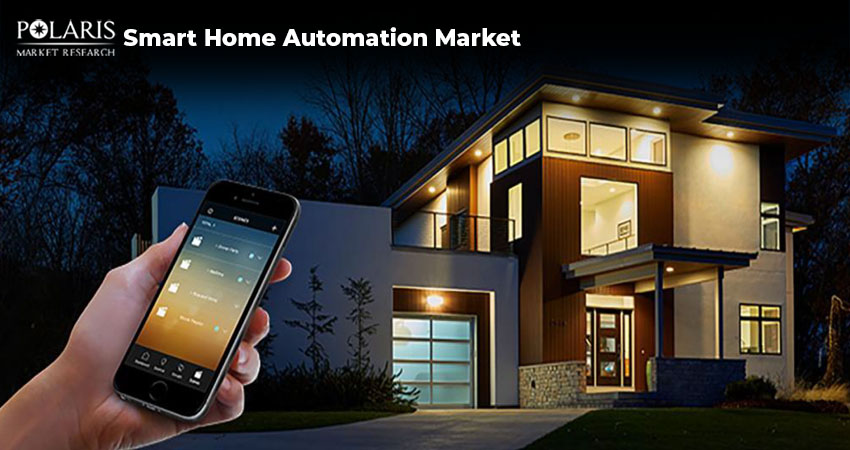How Smart Home Automation Is Shaping Future of Living?

Do you remember flipping light switches, adjusting thermostats by hand, or searching for keys? Those times are quickly disappearing. We're entering an age where our homes are becoming intelligent, intuitive, and effortlessly responsive to our desires, all thanks to the fascinating realm of smart home automation. No longer a futuristic concept, smart homes are now accessible to the average homeowner, offering convenience, security, and energy efficiency. From managing energy consumption to enhancing home security, smart home technology is growing rapidly as people are seeking more convenience, safety, and sustainability in their living spaces.
But what exactly is smart home automation? How does it work, and what benefits does it bring? In this blog, we’ll explore the ins and outs of smart home technology, its key components, advantages, and what the future holds for automated living.
What Exactly Is Smart Home Automation?
Smart home automation is the application of technology to automate functions and manage many aspects of your home environment. This is done by linking various devices and systems, from lighting and security to entertainment and appliances, to a central hub or network. These networked devices can then talk to one another and be remotely controlled through smartphones, tablets, voice-controlled assistants, or even through pre-programmed schedules and triggers.
Imagine it as equipping your home with a brain and nervous system. The "brain" is the master control system, and the "nervous system" is the network of connected devices. It enables smooth communication and automatic reactions based on preferences, habits, and even climate.
The size of the global smart home automation market was estimated at USD 74.28 billion in 2023. The market is expected to grow from USD 85.52 billion in 2024 to USD 268.97 billion by 2032, displaying a CAGR of 15.4% over the forecast period.
Key Components of Smart Homes
A fully automated smart home consists of several interconnected devices. Here are some of the most common components:
Smart Lighting Systems: Smart bulbs (like Philips Hue or LIFX) allow users to control lights via voice commands or an app. Features include dimming, color changes, and scheduling. Motion sensors can also turn lights on/off when someone enters or leaves a room.
Smart Thermostats: These devices learn your temperature preferences and adjust heating/cooling automatically. They can also detect when you’re away to save energy.
- Smart Security Systems
- Smart Cameras provide real-time surveillance and alerts.
- Smart Doorbells allow video calls with visitors.
- Smart Locks enable keyless entry and remote access control.
Voice Assistant Applications: Amazon Alexa, Google Assistant, and Apple Siri act as central controllers for smart devices, enabling voice commands for various functions.
Smart Appliances: Refrigerators, washing machines, and ovens with Wi-Fi connectivity can be controlled remotely, send maintenance alerts, and even order groceries automatically.
Benefits of Smart Home Automation
Smart home automation offers numerous benefits, including enhanced convenience, energy savings, increased security, and accessibility for people with disabilities. A few of the major benefits are:
- Convenience & Comfort: Smart home automation enhances convenience and comfort by enabling remote control of various home functions, personalization of settings, and automated tasks, all accessible through a single device or voice commands. This includes features like adjusting temperature, lighting, entertainment, and appliances, making daily life more efficient and comfortable.
- Energy Efficiency & Cost Savings: Smart home automation can significantly improve energy efficiency and lead to cost savings for both residential and commercial properties. By automating and optimizing energy use, smart systems can reduce consumption and lower utility bills. Features like smart thermostats, lighting systems, and energy monitoring tools can help identify and address energy waste.
- Enhanced Security: Smart home automation enhances security by integrating various technologies like surveillance cameras, motion sensors, and smart locks, allowing for real-time monitoring and remote control. This provides homeowners with enhanced security features beyond traditional systems, including real-time alerts, automated responses, and enhanced surveillance.
- Customization and Personalization: Smart home customization and personalization allow users to tailor their living spaces to their individual needs and preferences. This involves creating personalized routines, scenes, and settings that automatically adjust lighting, temperature, entertainment, and more, based on their preferences, schedules, and activities.
Advancements in Smart Home Automation
AI & Machine Learning Integration
Artificial intelligence and machine learning (ML) are transforming smart home automation, enabling predictive user behavior, personalized experiences, and enhanced energy management. Smart systems can learn user preferences and routines to automate tasks like adjusting temperature and lighting, and even suggesting content for entertainment.
Expansion of 5G & Edge Computing
The combination of 5G and edge computing is rapidly transforming smart home automation, enabling faster, more reliable, and more intelligent home control systems. 5G's high speed and low latency, coupled with edge computing's ability to process data locally, create a powerful synergy for real-time applications like smart lighting, security systems, and automated appliances.
Increased Adoption of Robotics
The increasing adoption of robotics in smart home automation is a significant trend, driven by factors like the growing prevalence of smart home ecosystems, advancements in AI and ML, and the desire for more convenient and efficient homes. This shift is leading to the integration of AI-driven cleaning, security, and personal support robots, as well as the development of more intelligent and responsive household robots.
Final Thoughts
Smart home automation isn’t just about gadgets and gimmicks; it’s about enhancing everyday life. We can expect to see even more sophisticated integration, with AI playing a larger role in predicting needs, and seamless interoperability between different platforms. From proactive security systems to personalized comfort settings that learn our preferences over time, the future of our homes is undoubtedly intelligent and interconnected.

